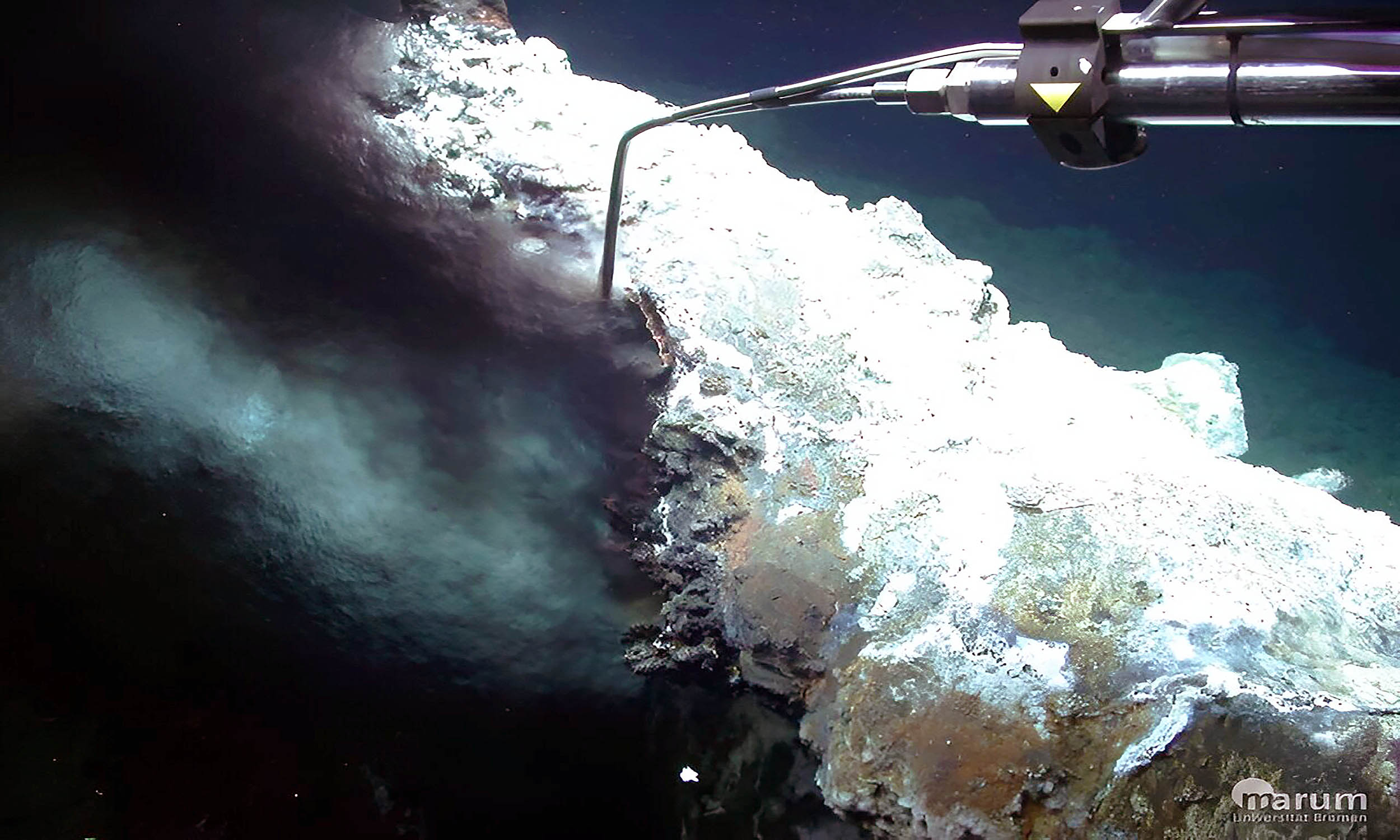In 2022, an international research team aboard the MARIA S. MERIAN made a remarkable discovery in a hydrothermal field. They found it 3,000 meters (9,842 feet) below the ocean surface.
The team discovered the first known hydrothermal field along the 500-kilometer-long Knipovich Ridge.
This mountain range is located near Spitsbergen, a Norwegian archipelago in the Arctic Ocean. Scientists have long studied this region for its harsh climate and unique ecosystems.
This discovery revealed a hidden underwater landscape, teeming with intense geological activity and unique marine life.
The discovery of such a vibrant ecosystem in the deep, cold waters of the Arctic challenges our knowledge of where life can thrive.
Science behind hydrothermal fields
Hydrothermal vents are essentially underwater seeps that spew hot, mineral-rich fluids back into the ocean. These vents play a crucial role in Earth’s geochemical cycles and support diverse ecosystems.
According to a key figure on the expedition, these openings are formed by water seeping into the ocean floor, being heated by magma and later resurfacing with the minerals inside.
The rising fluid is enriched with minerals and other materials from the Earth’s crust before exiting through tubular chimneys known as “black smokers.”
These smokers are responsible for the precipitation of metal-rich minerals.
Jøtul field on Knipovich Ridge
The investigated field, named “Jøtul” after a Norse mythological giant, is nestled in the Knipovich Ridge.
The Ridge is part of a larger geological network formed by Greenland, Norway and Spitsbergen, on the boundary of the North American and European tectonic plates.
This boundary, also called a ‘spreading ridge’, is characterized by the gradual separation of two tectonic plates.
Interestingly, the Jøtul field is located on a slowly expanding mountain ridge, which makes its discovery even more significant.
The expedition’s chief scientist from the University of Bremen, Gerhard Bohrmann, explains the scientific importance of the Jøtul field.
Its unique location and high methane concentrations make it an invaluable resource in climate studies.
Link to climate change
The high methane concentrations in the Jøtul field indicate an intense interaction between magma and oceanic sediments.
As methane flows through the water column, it is converted to CO2. This increases the CO2 concentration in the ocean and contributes to ocean acidification.
Furthermore, when it reaches the atmosphere, it acts as a greenhouse gas that affects climate change. However, the exact magnitude of the methane emissions from the Jøtul field that reach the atmosphere has yet to be studied in detail.
In the absence of light
The Jøtul field is home to special organisms that depend on chemosynthesis for their survival.
Because sunlight is completely absent at such great depths, the hydrothermal fluids form the basis for a unique ecosystem that thrives in the darkness.
Future exploration at the Jøtul field
To better understand the Jøtul field, a new expedition will depart next summer, again led by Professor Gerhard Bohrmann.
The primary goal is to explore and sample unknown areas of the Jøtul field. With comprehensive data from the field, researchers want to make comparisons with other known hydrothermal fields in the Arctic province.
The study findings are part of the Bremen Cluster of Excellence entitled “The Ocean Floor — Earth’s Uncharted Interface”, which aims to investigate complex processes on the seabed and their impact on the global climate.
The Jøtul field will certainly remain a focus for future research activities within the cluster.
Technological innovations
The exploration of the Jøtul field and similar hydrothermal areas has been made possible by remarkable developments in deep-sea technology.
Using advanced remotely operated vehicles (ROVs) and autonomous underwater vehicles (AUVs) equipped with high-resolution cameras, advanced sensors and sampling instruments, scientists can conduct research in previously inaccessible underwater areas.
These innovations enable real-time data collection and high-resolution mapping of the seafloor, which is essential for understanding the complex interactions within hydrothermal systems.
Furthermore, the integration of advanced laboratory techniques on board research vessels facilitates the direct analysis and interpretation of samples.
As technology advances, we are discovering incredible new insights into the depths of the ocean. These advances are leading us into an exciting new era of marine science.
The full study was published in the journal Scientific reports.
—–
Like what you read? Subscribe to our newsletter for engaging articles, exclusive content and the latest updates.
Check us out on EarthSnap, a free app from Eric Ralls and Earth.com.
—–
